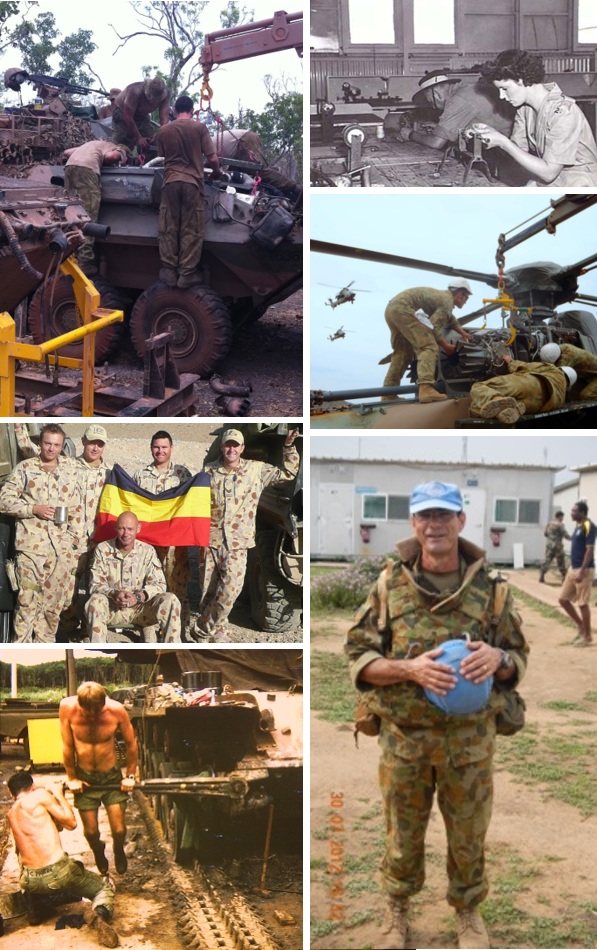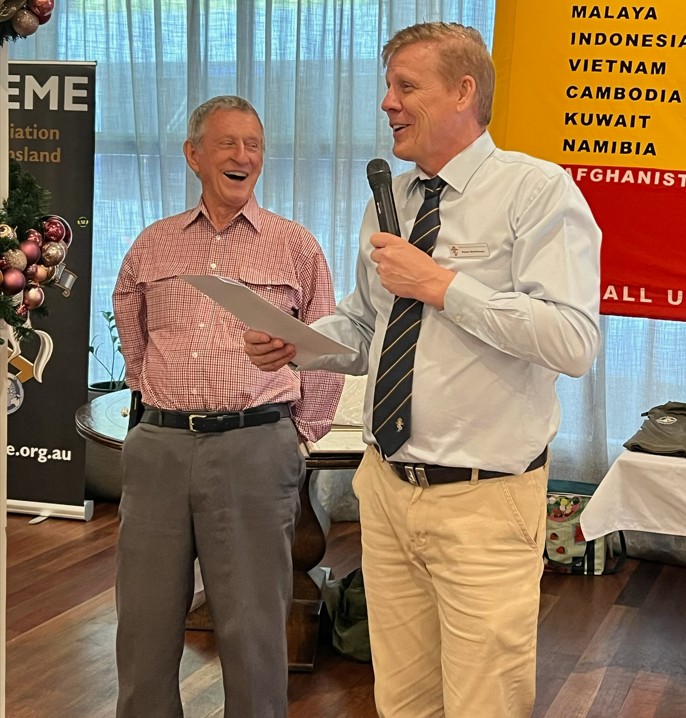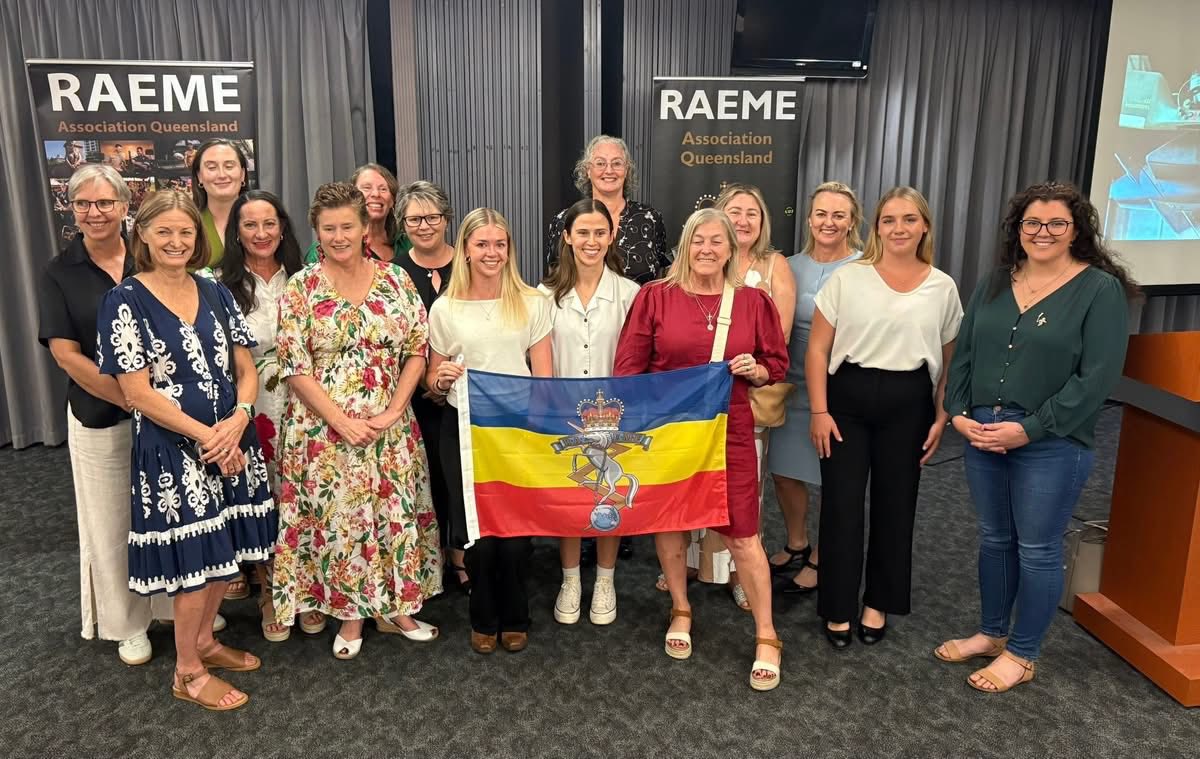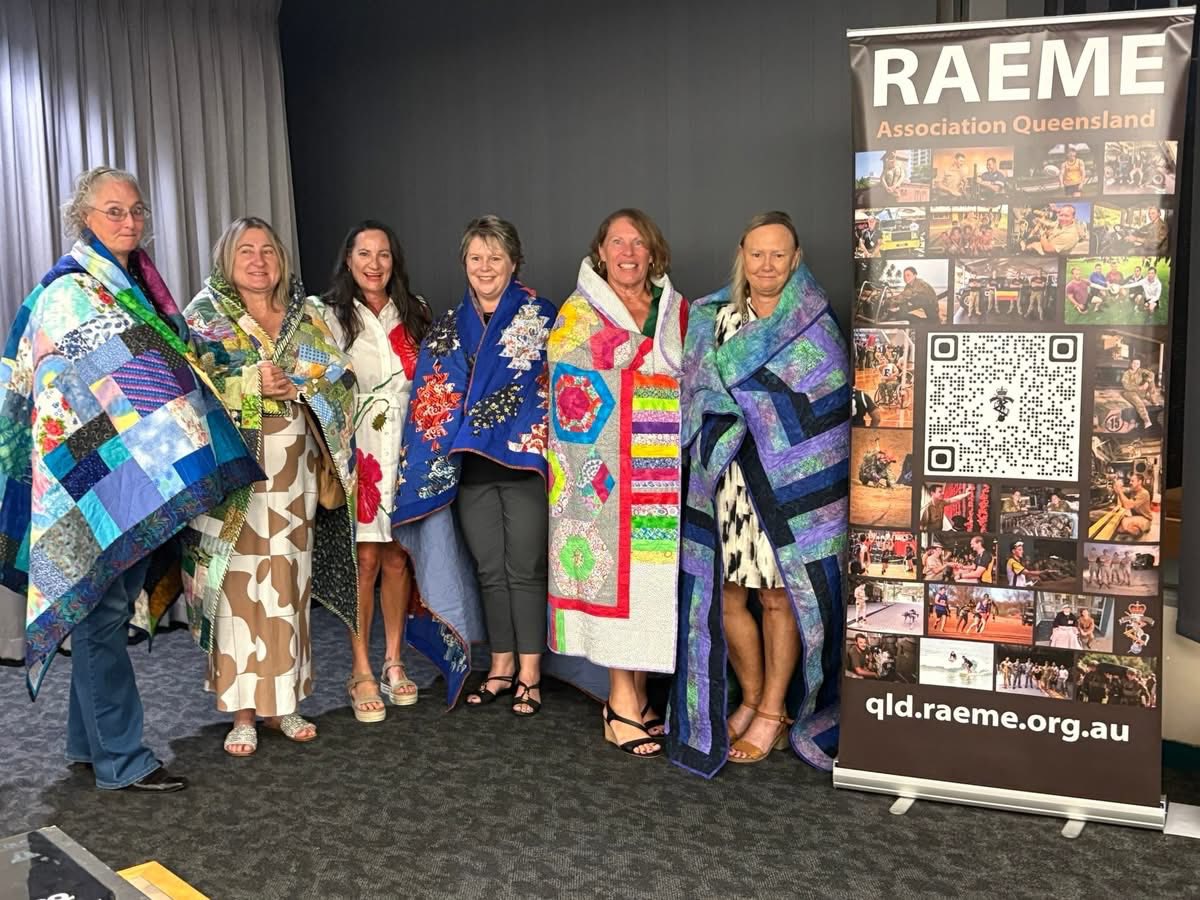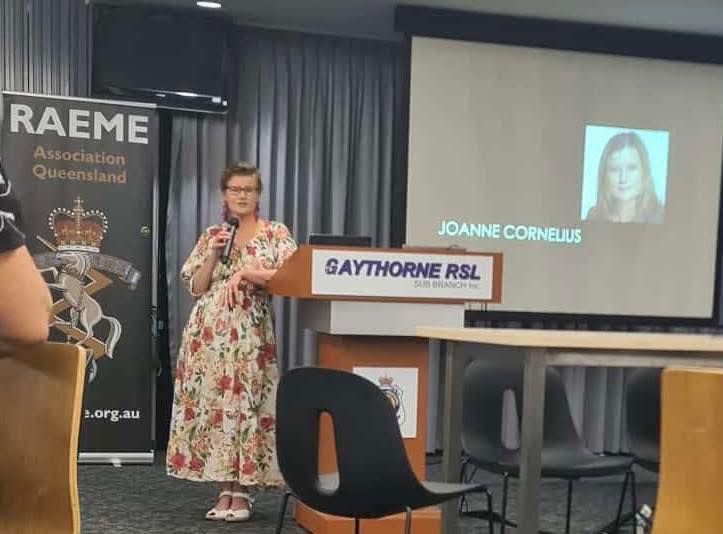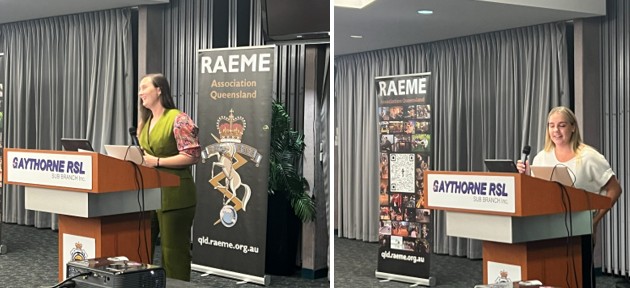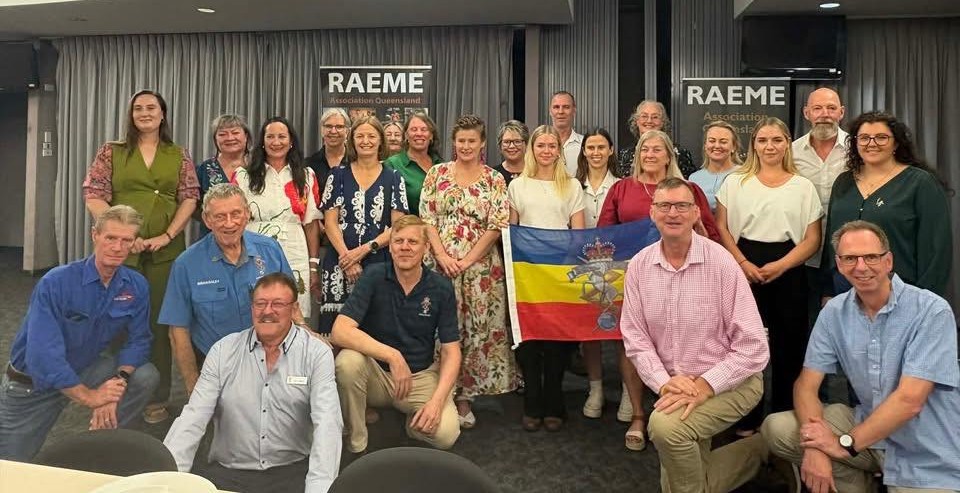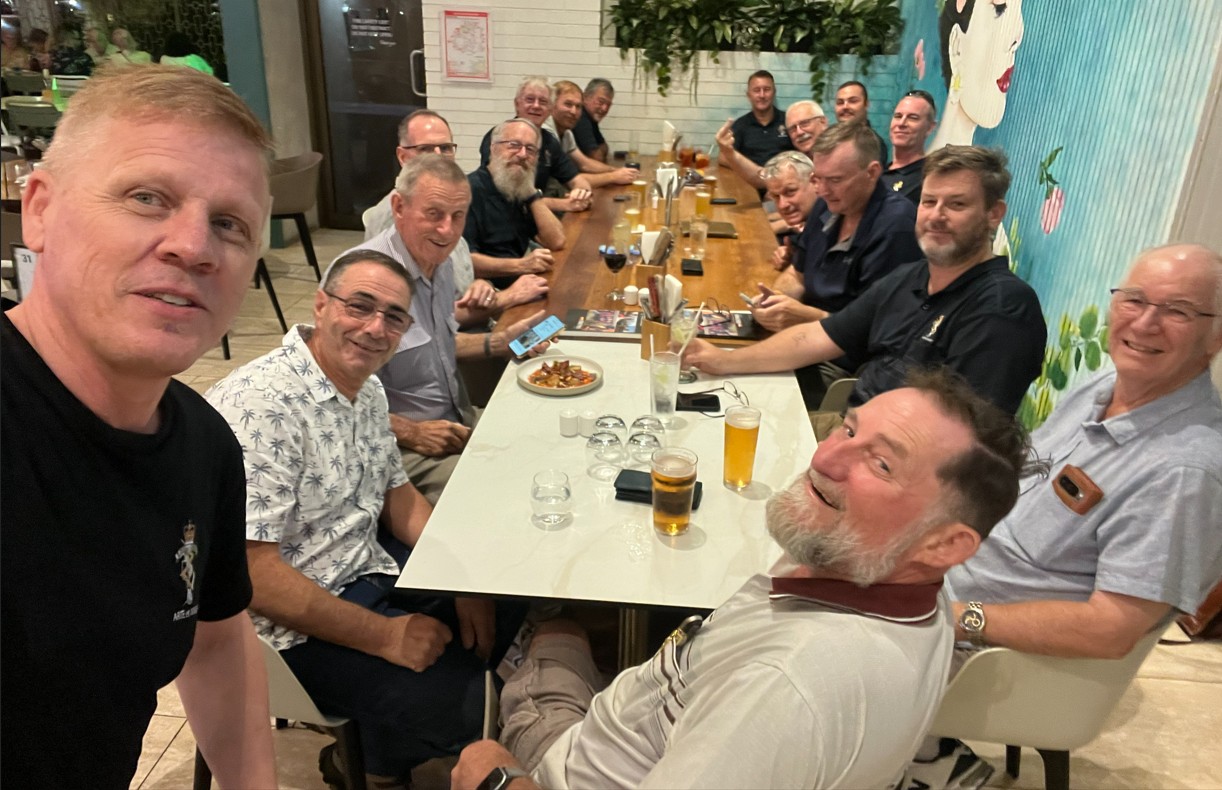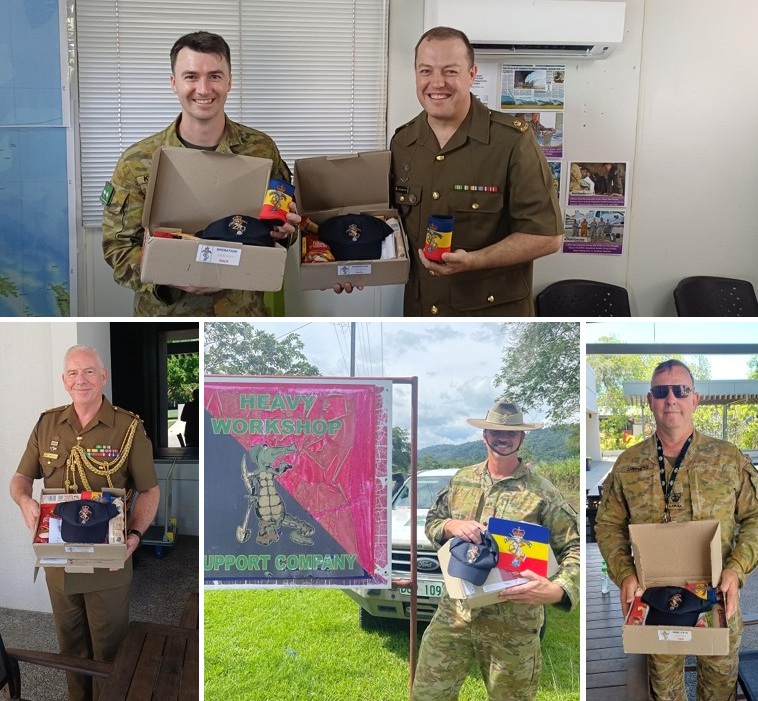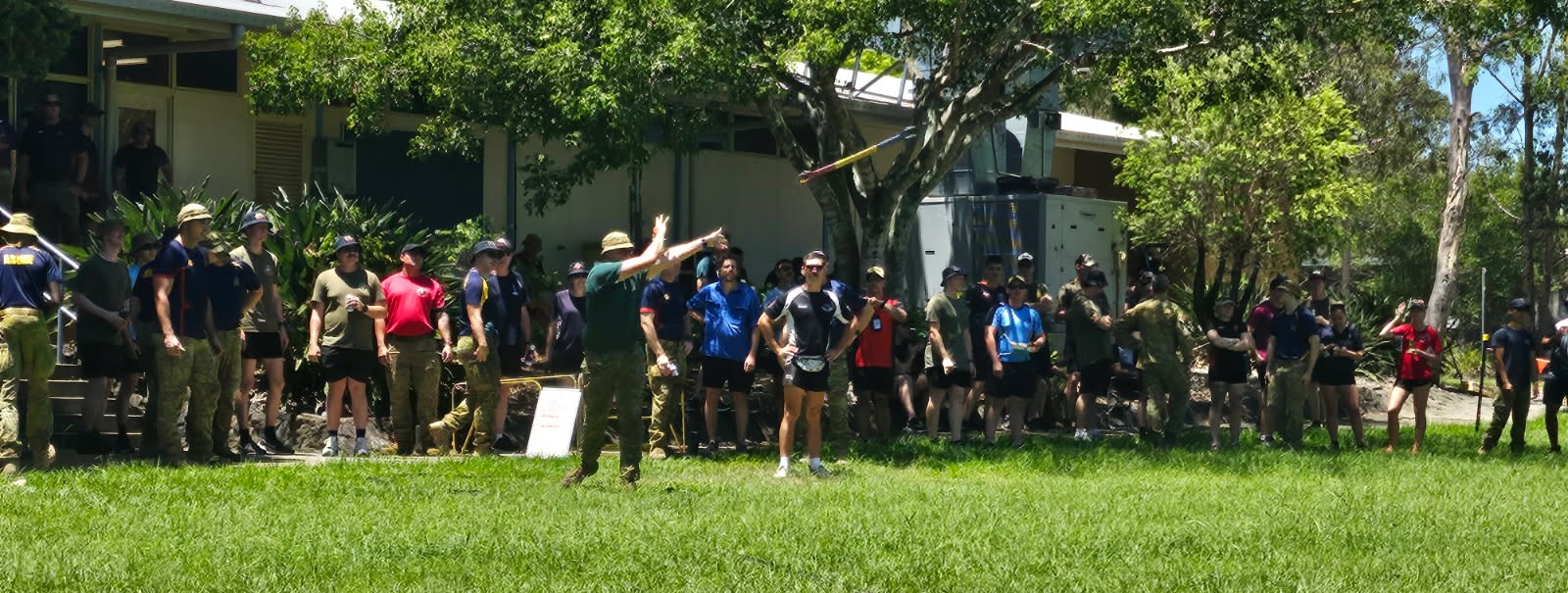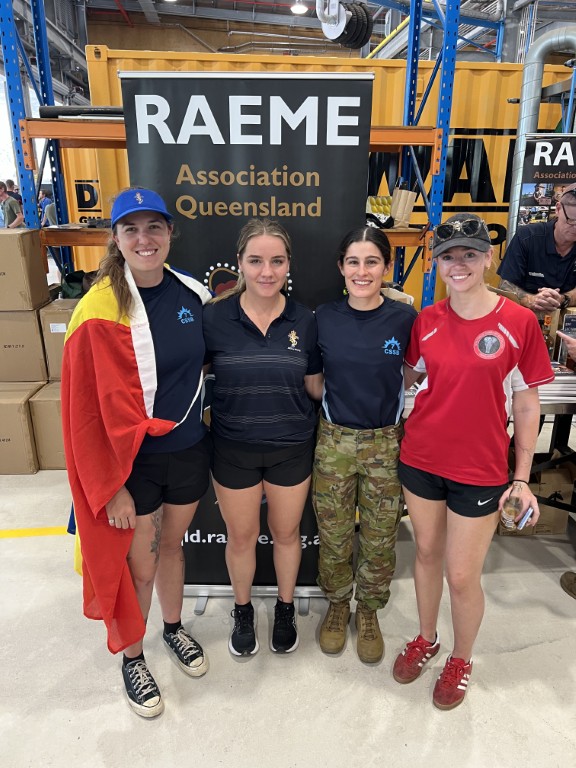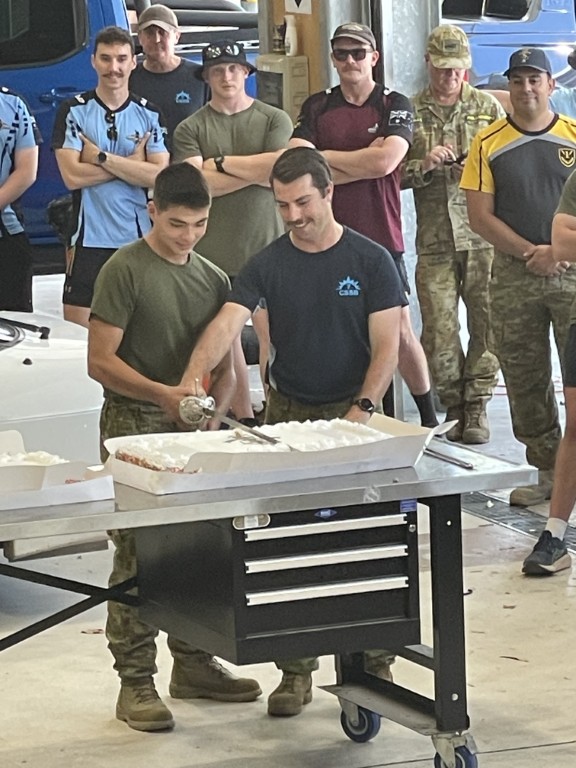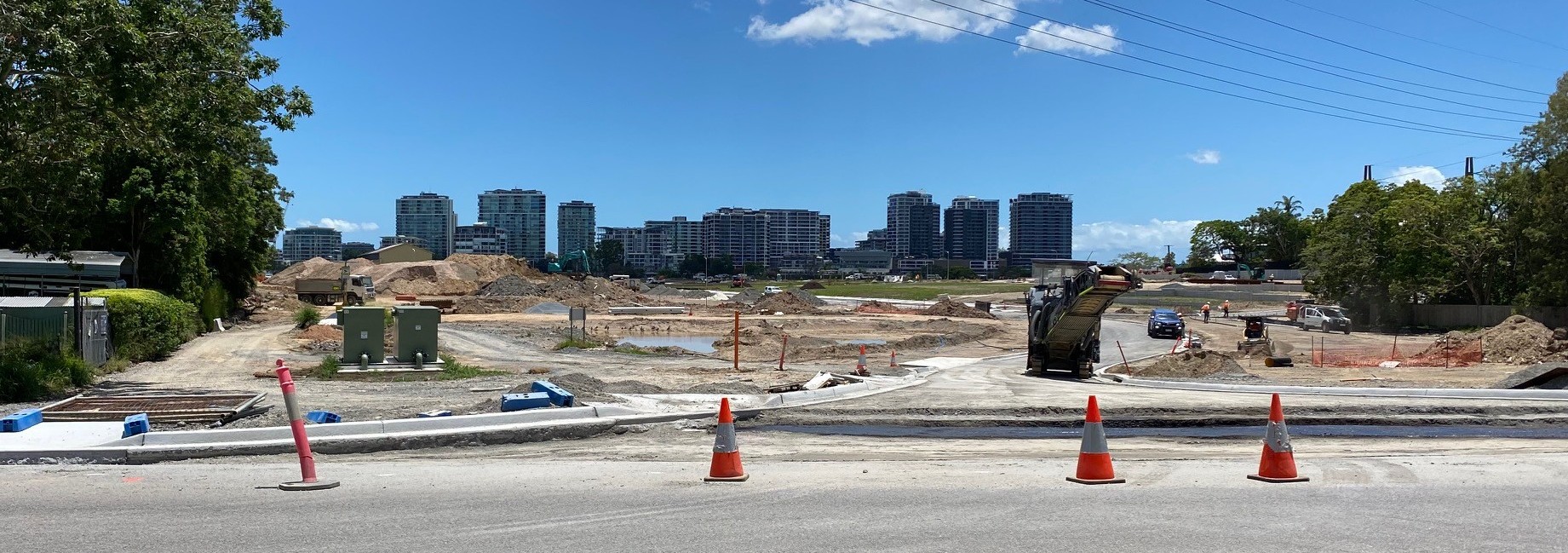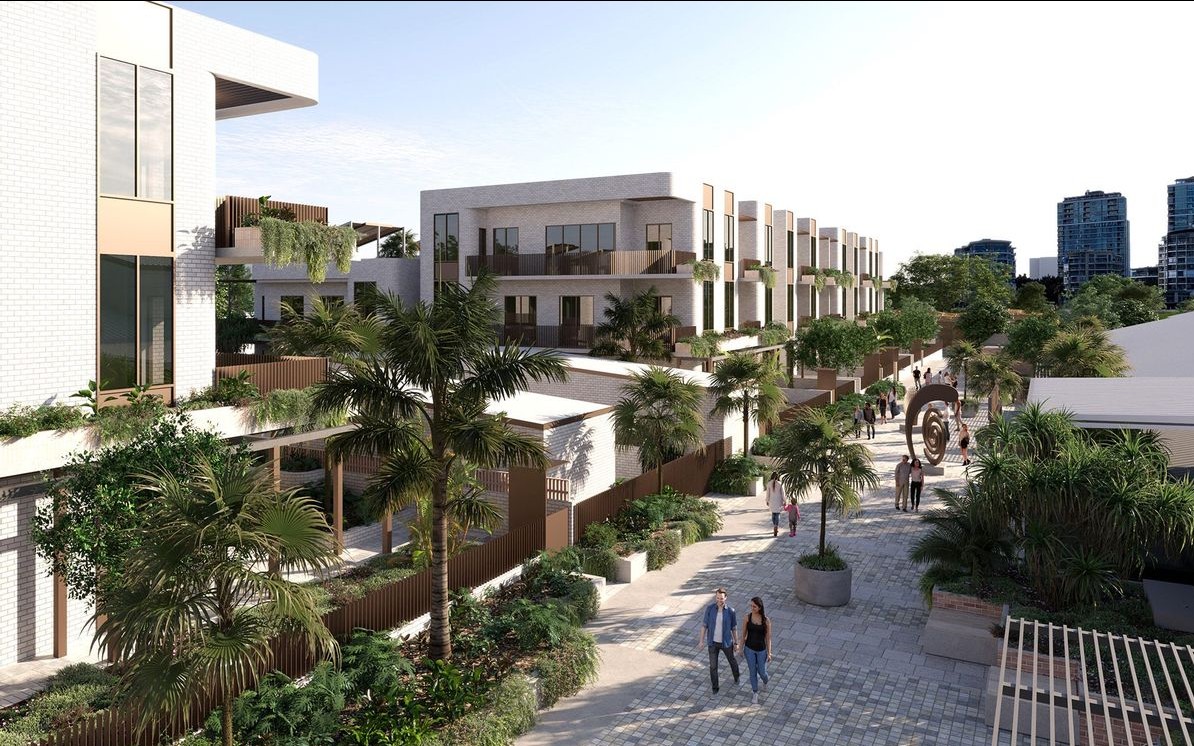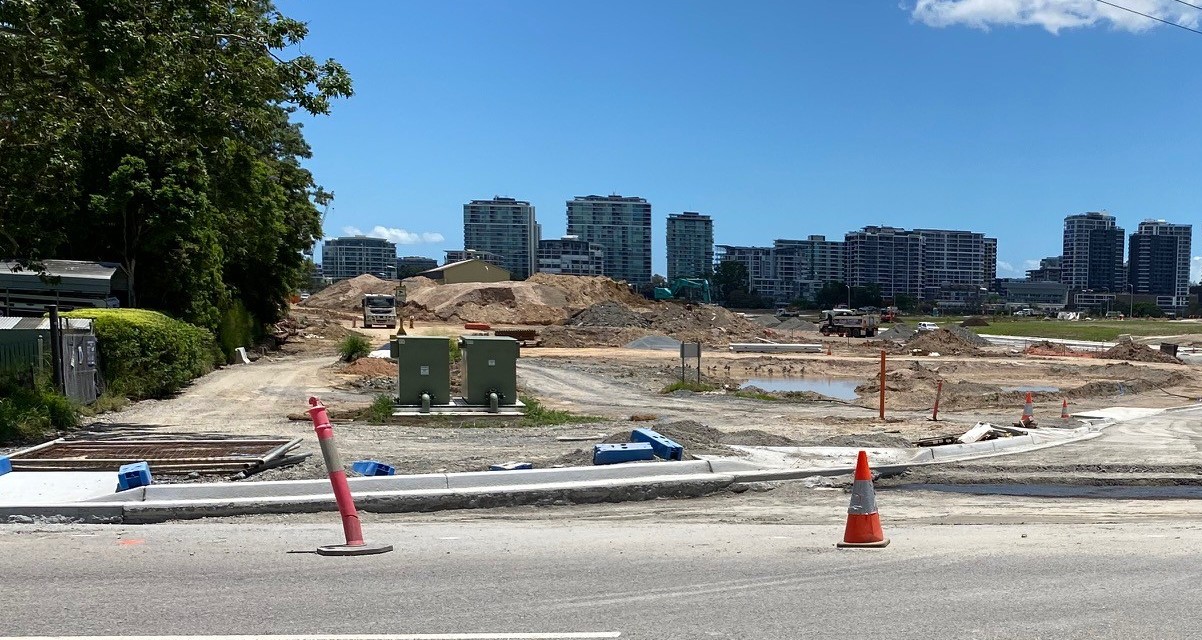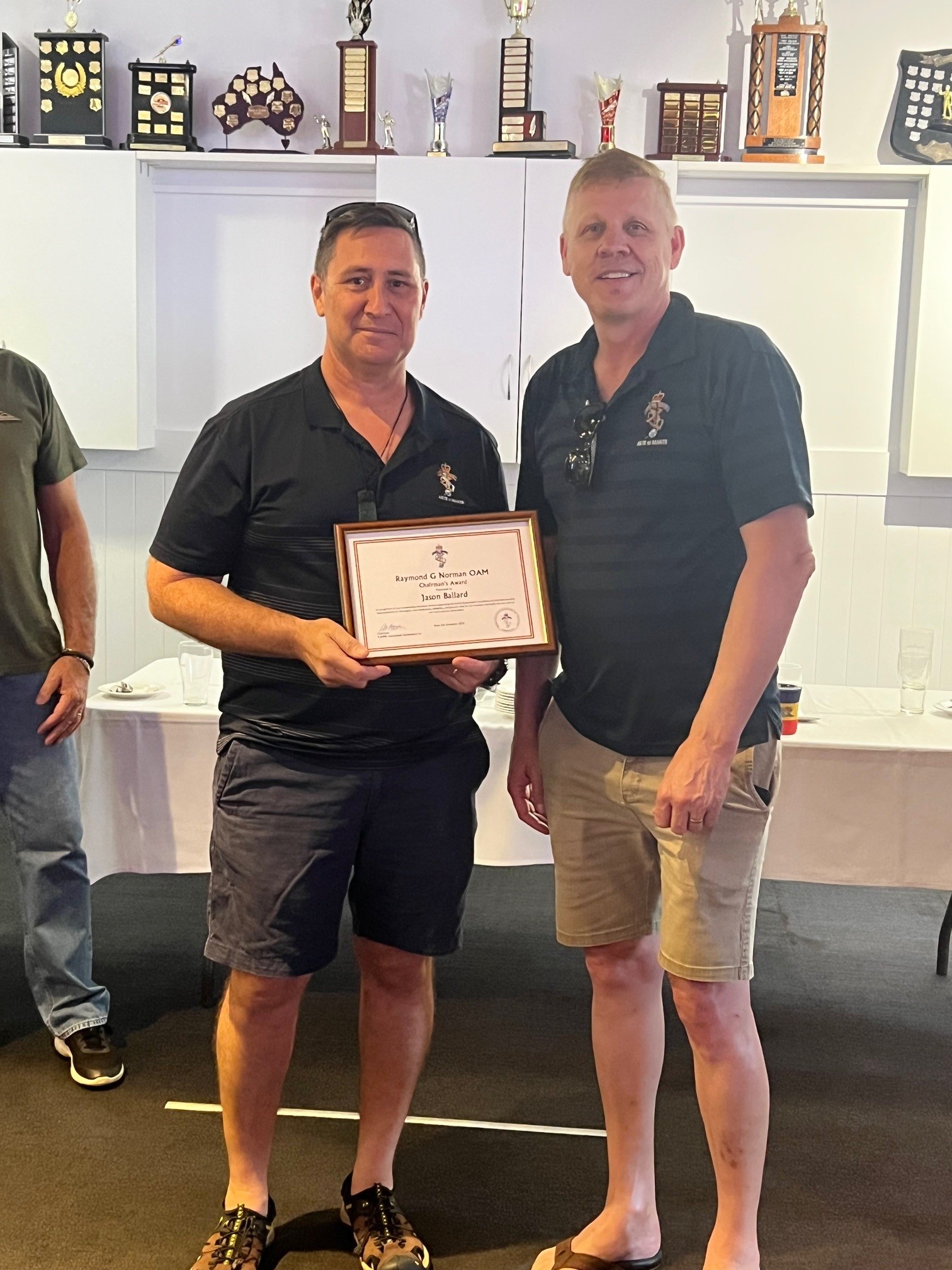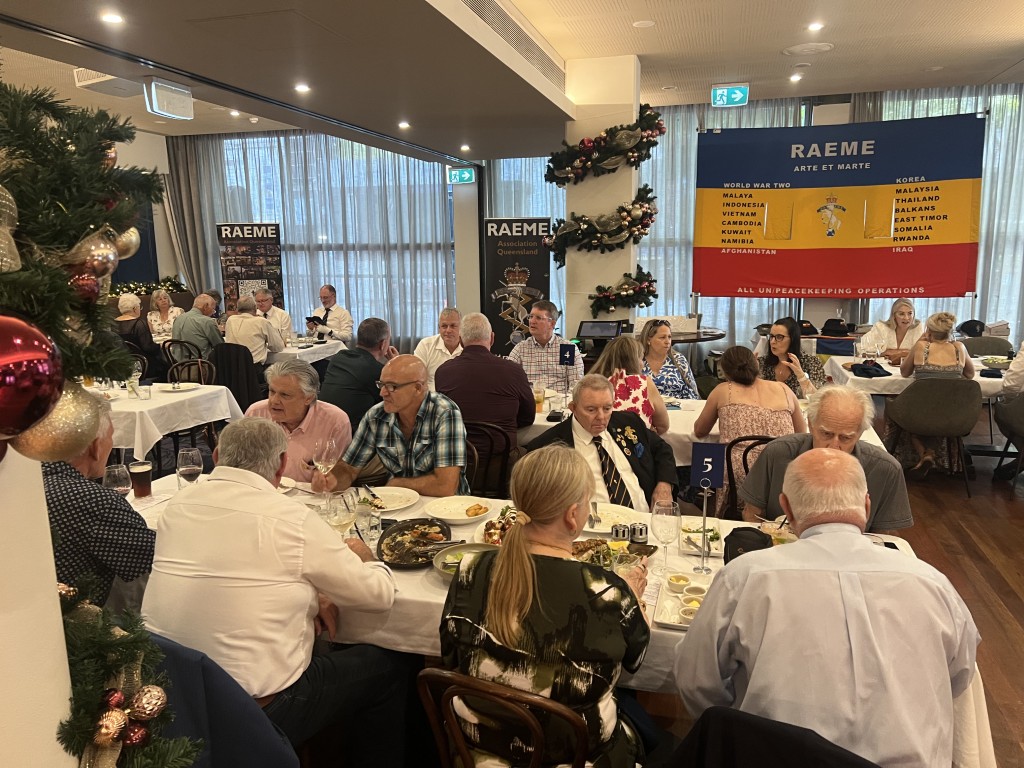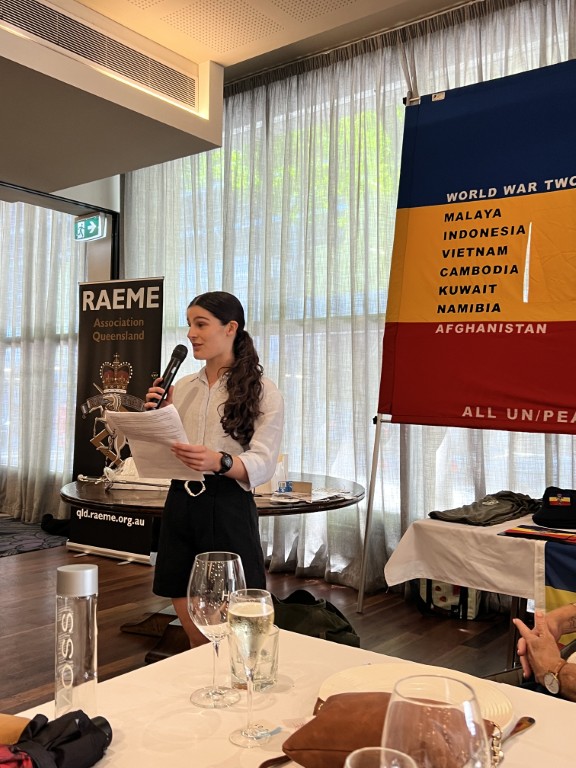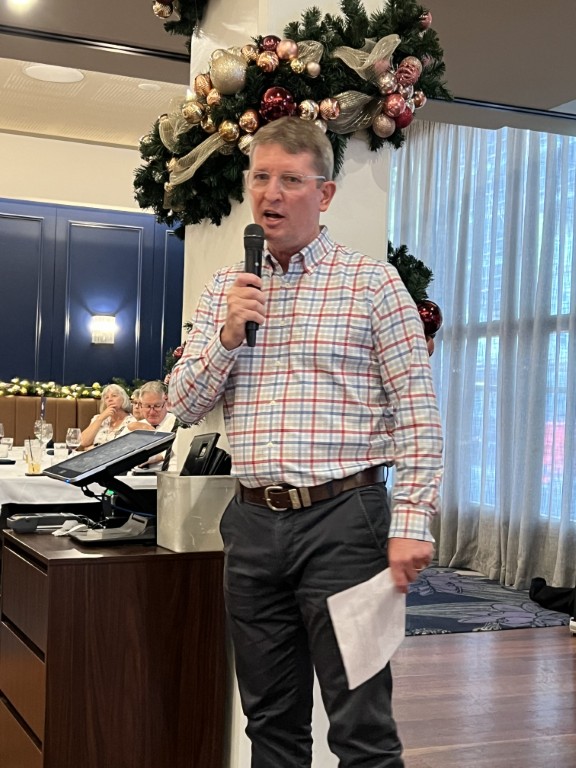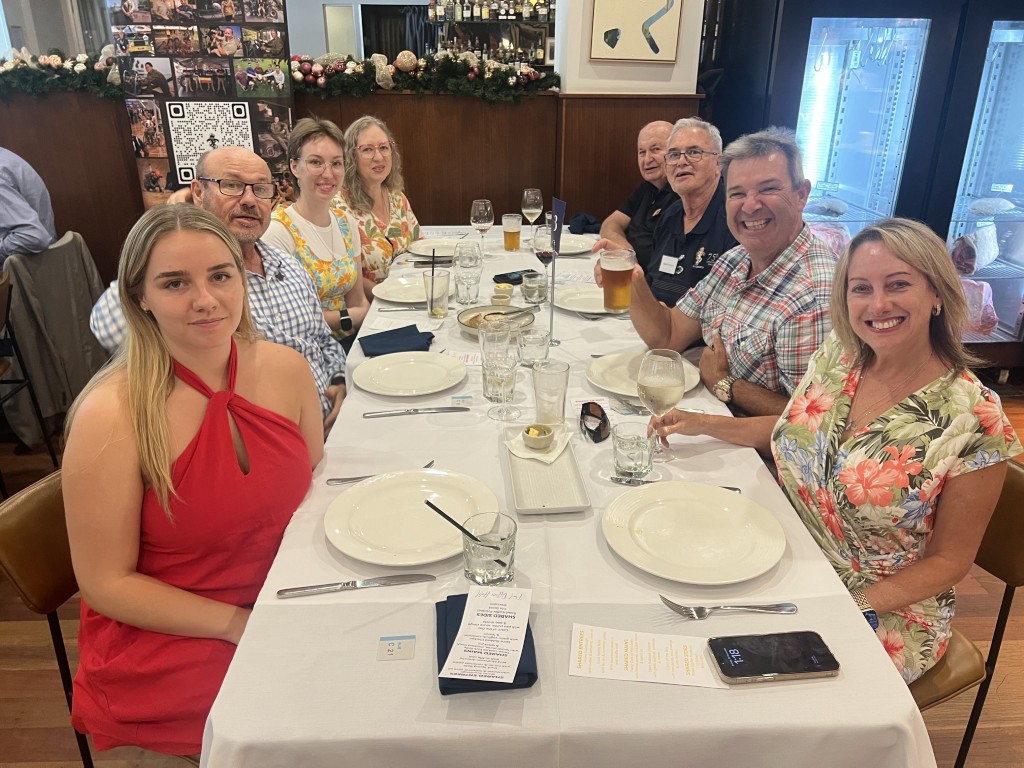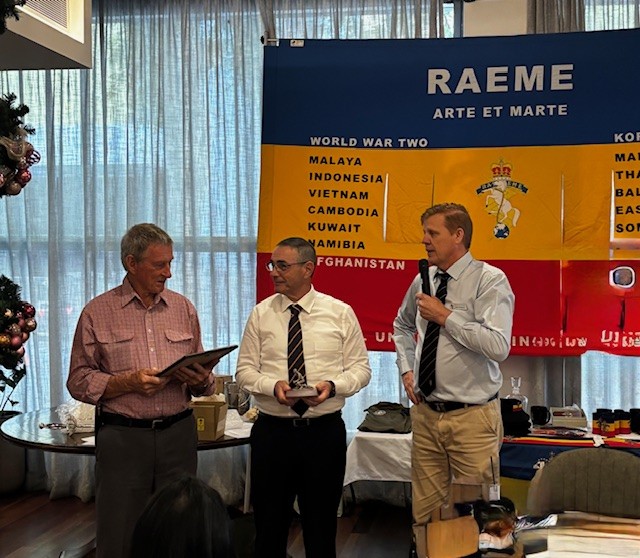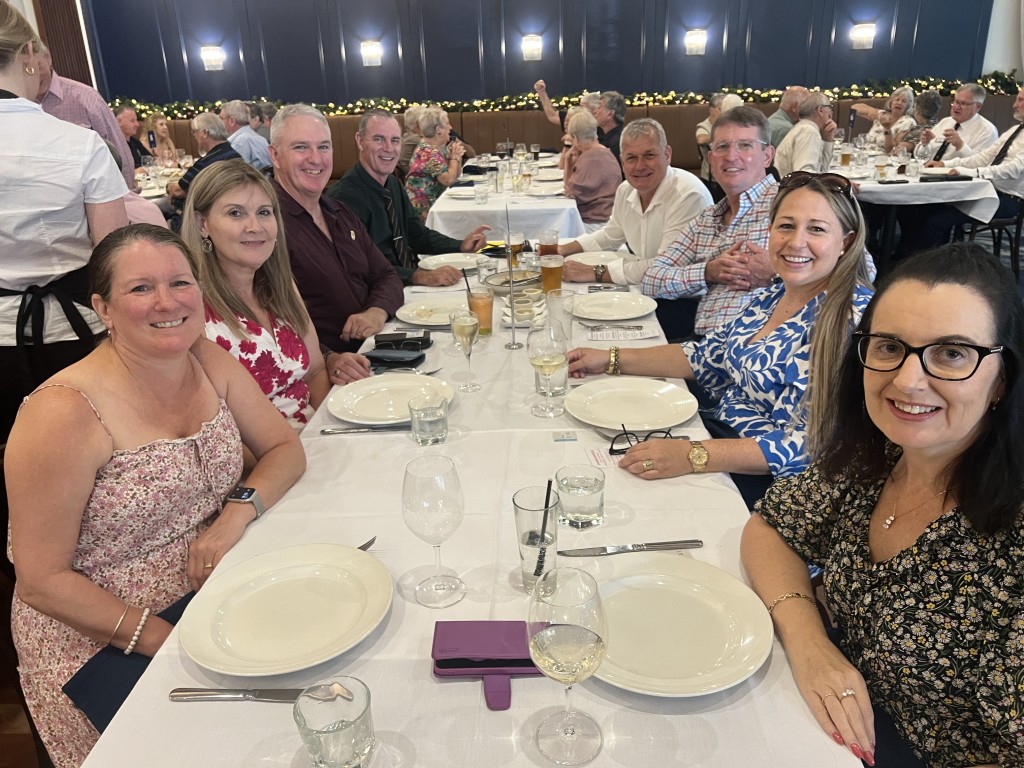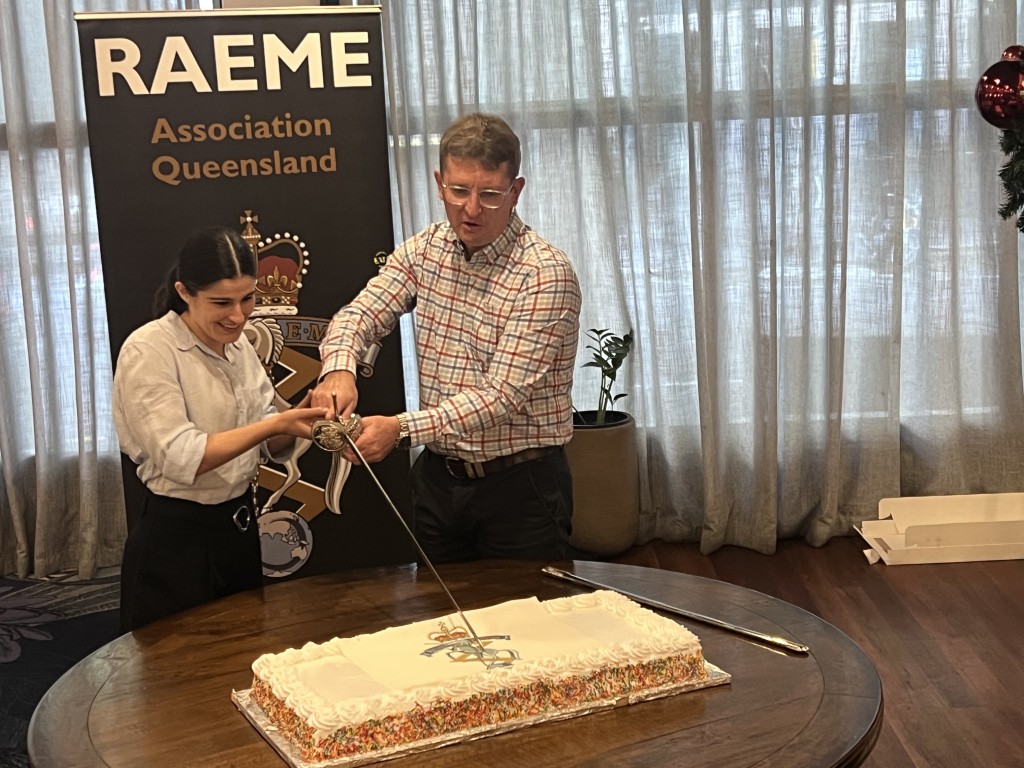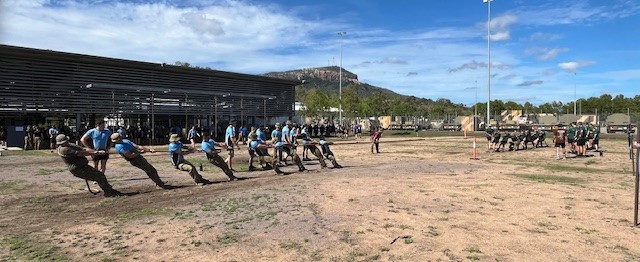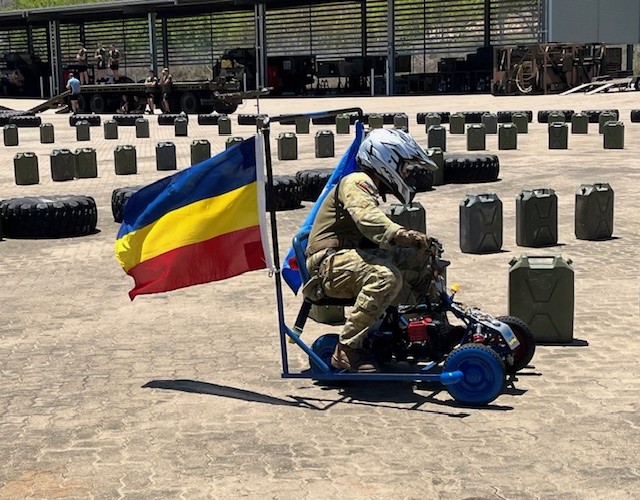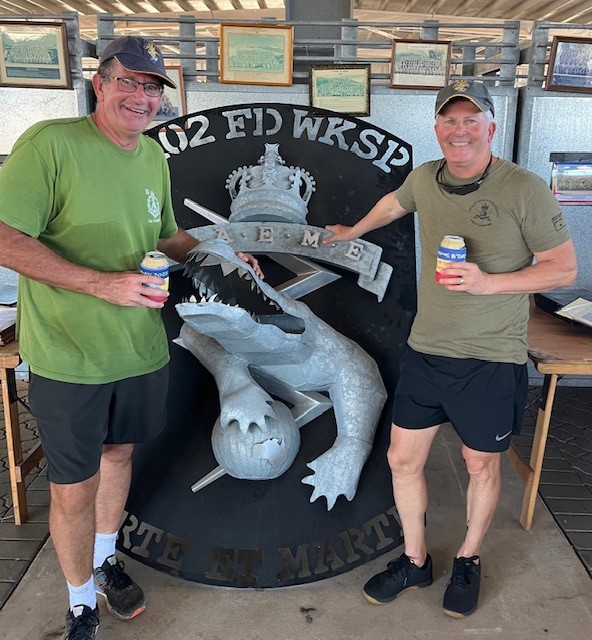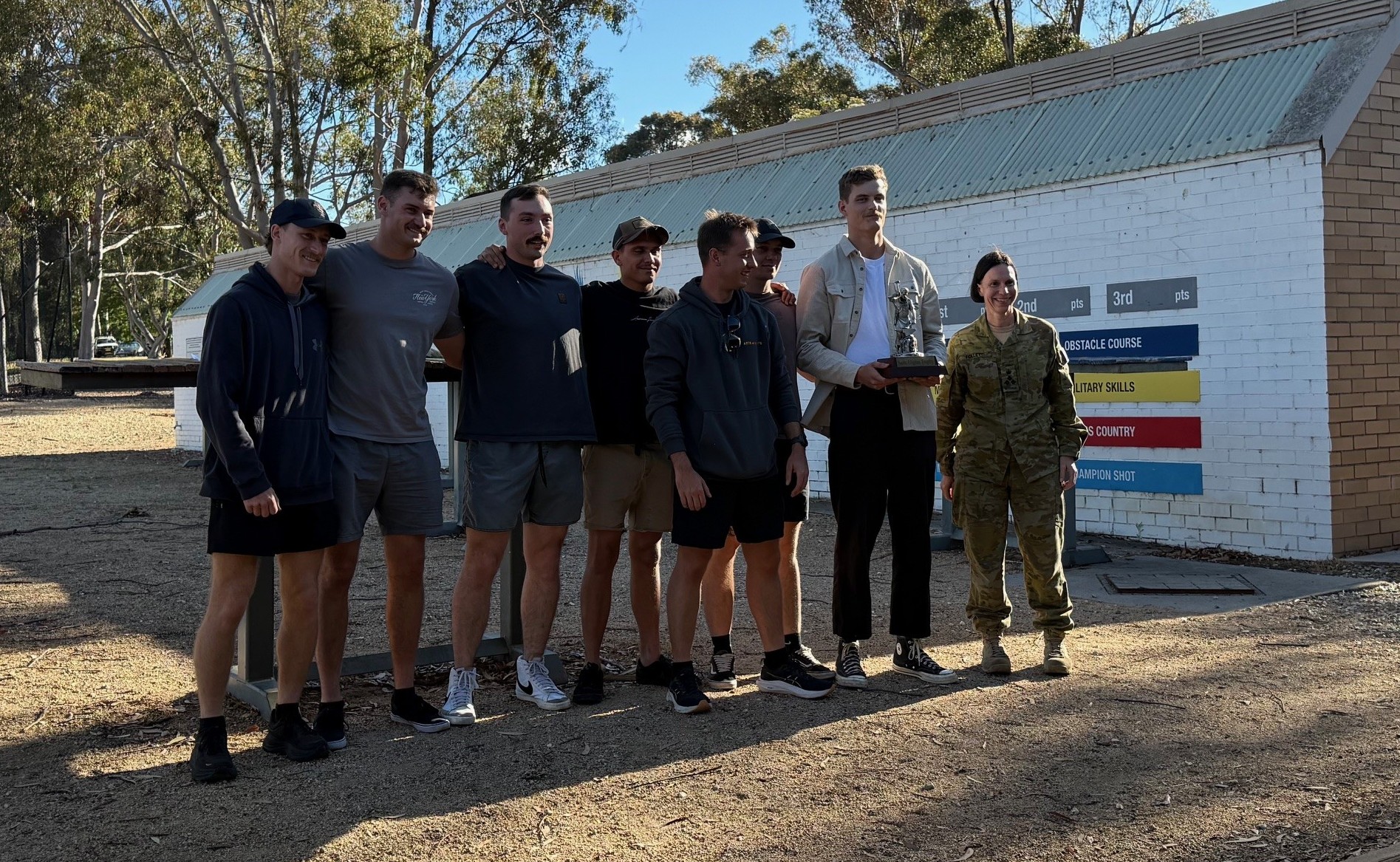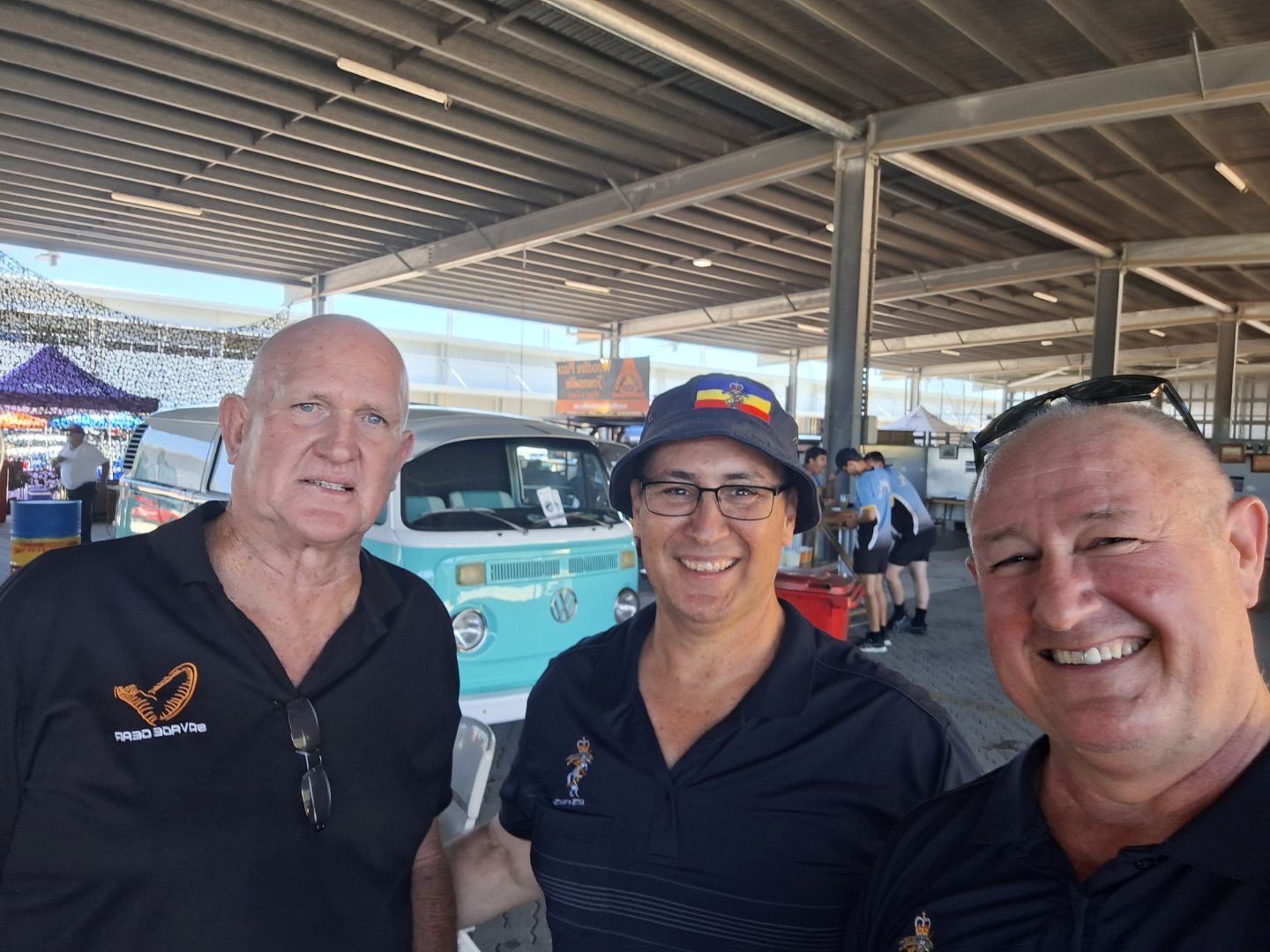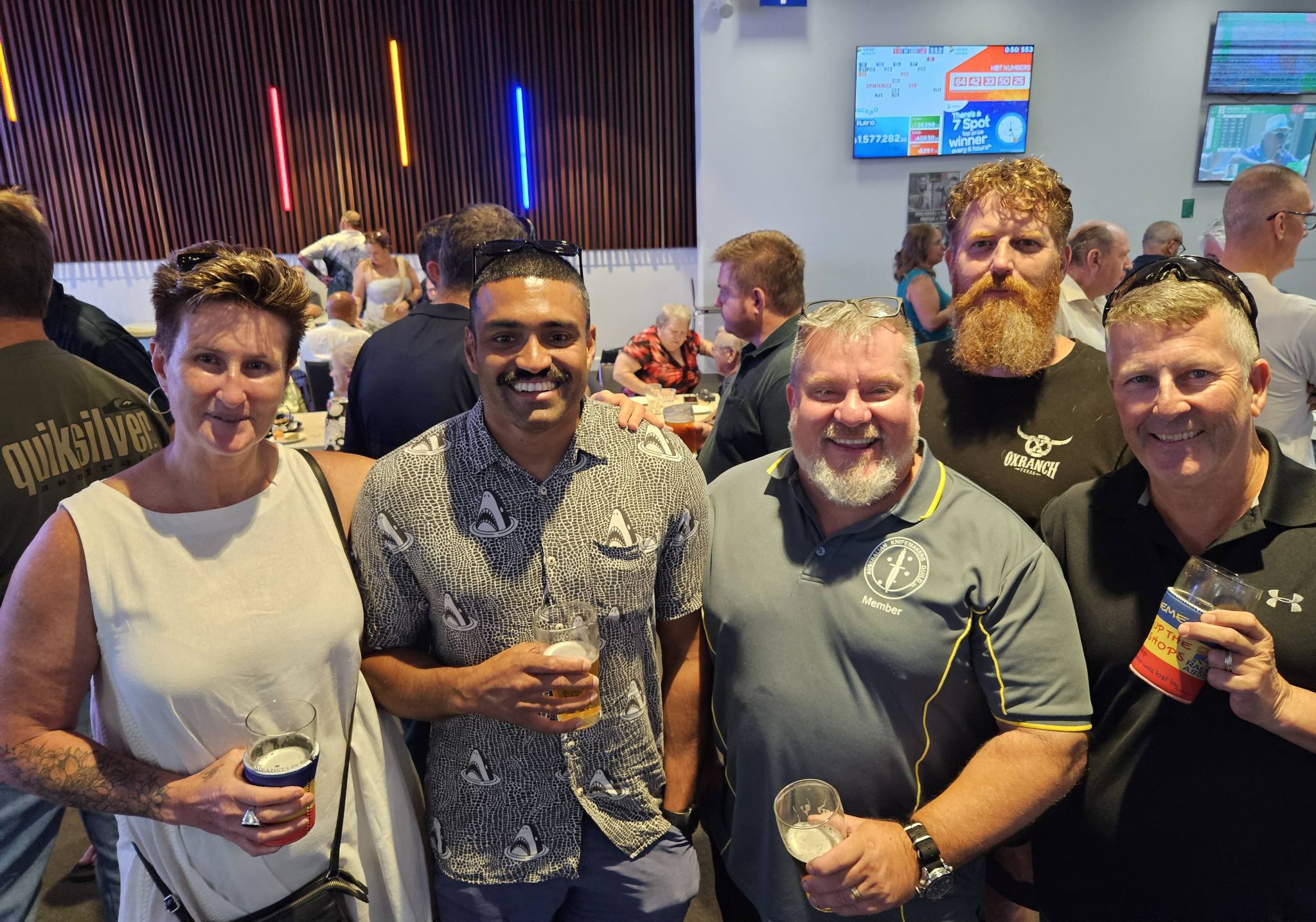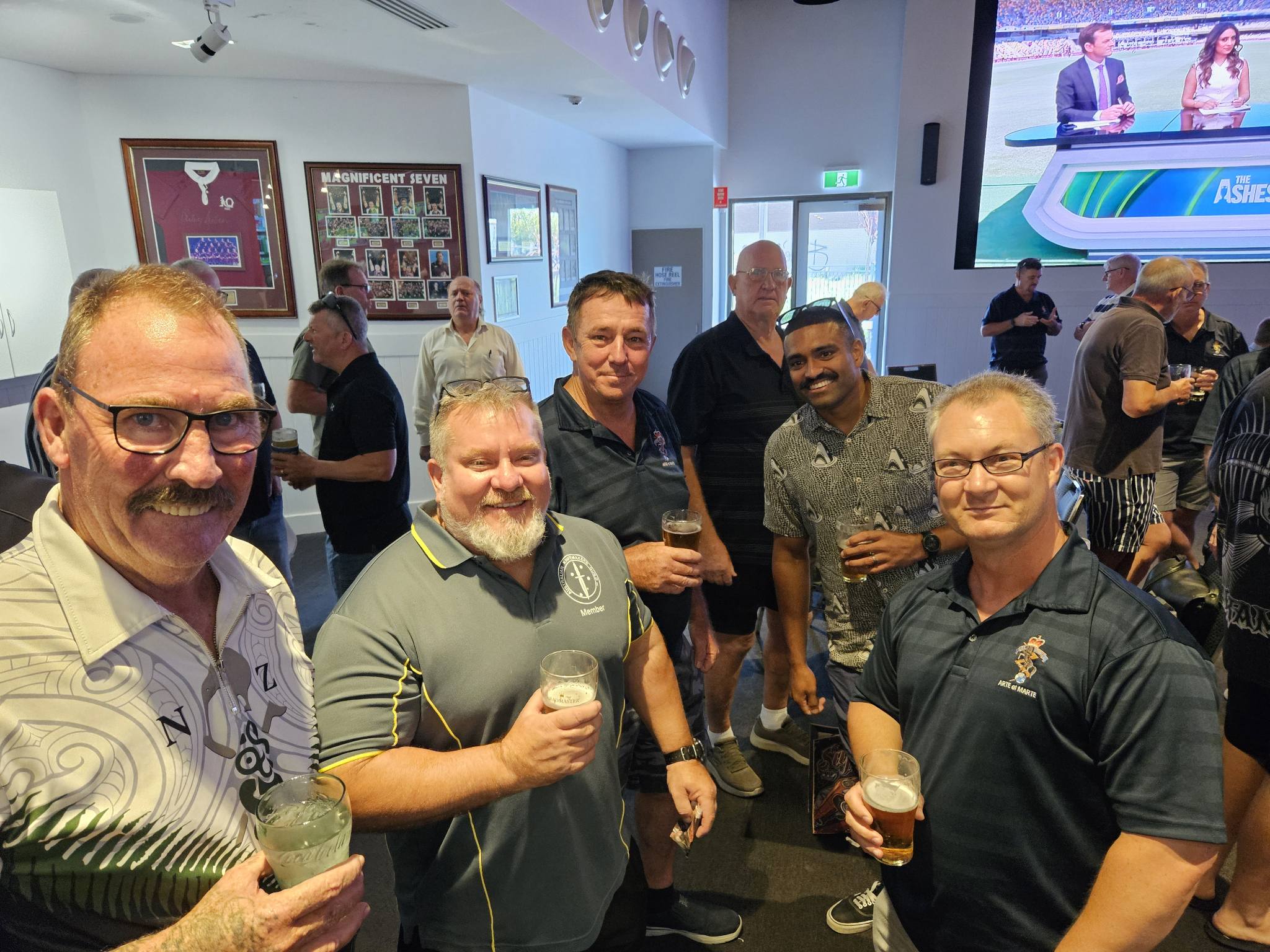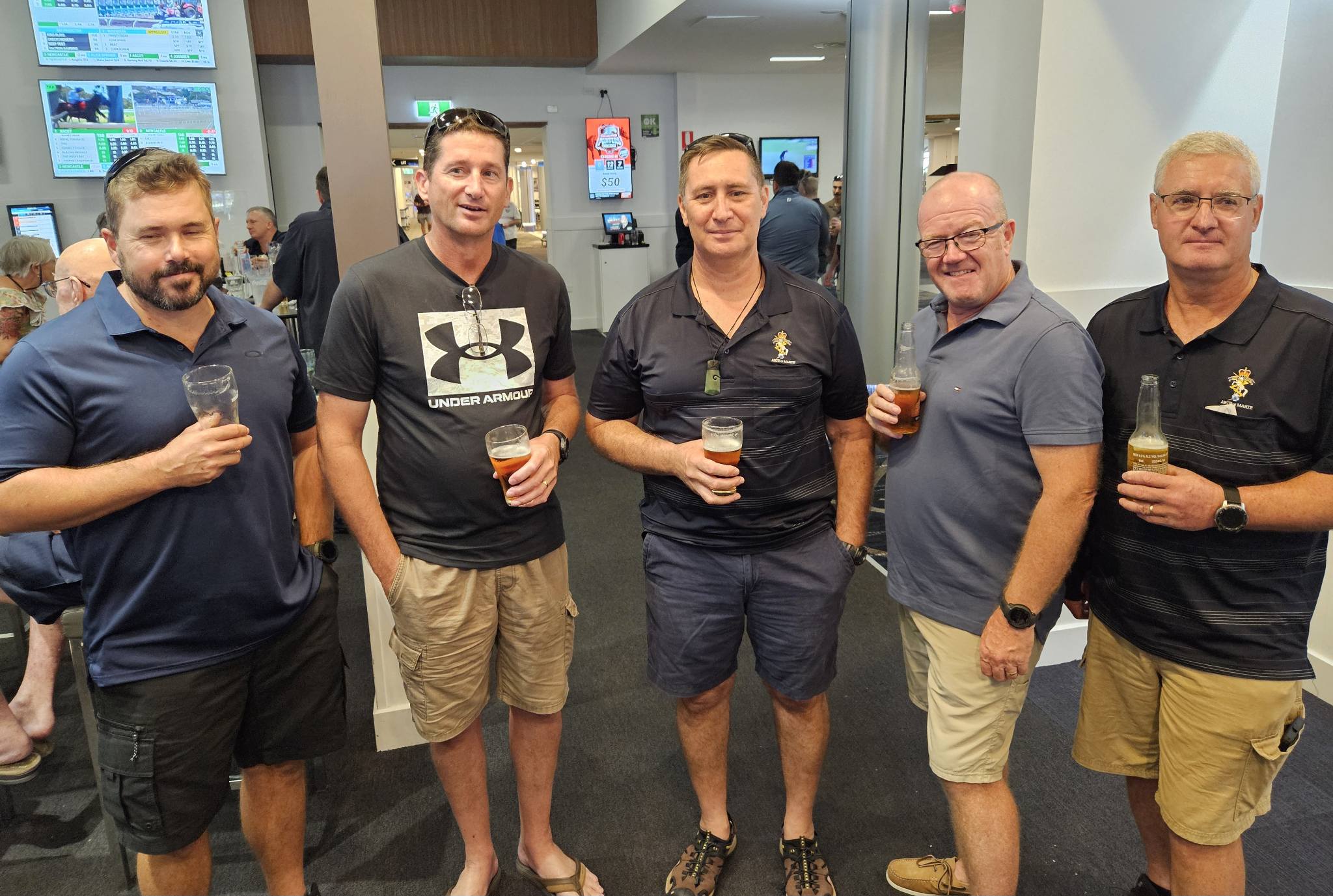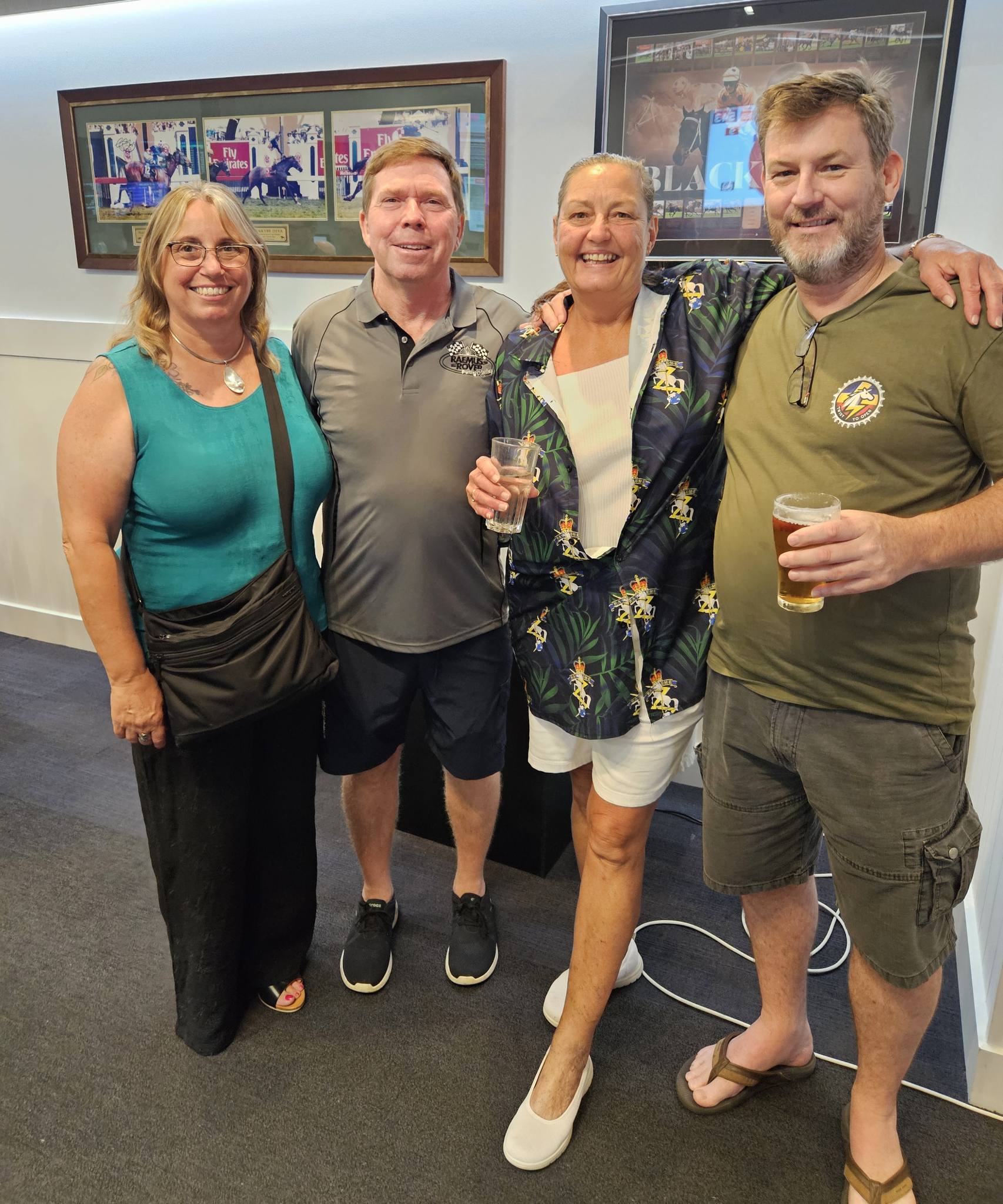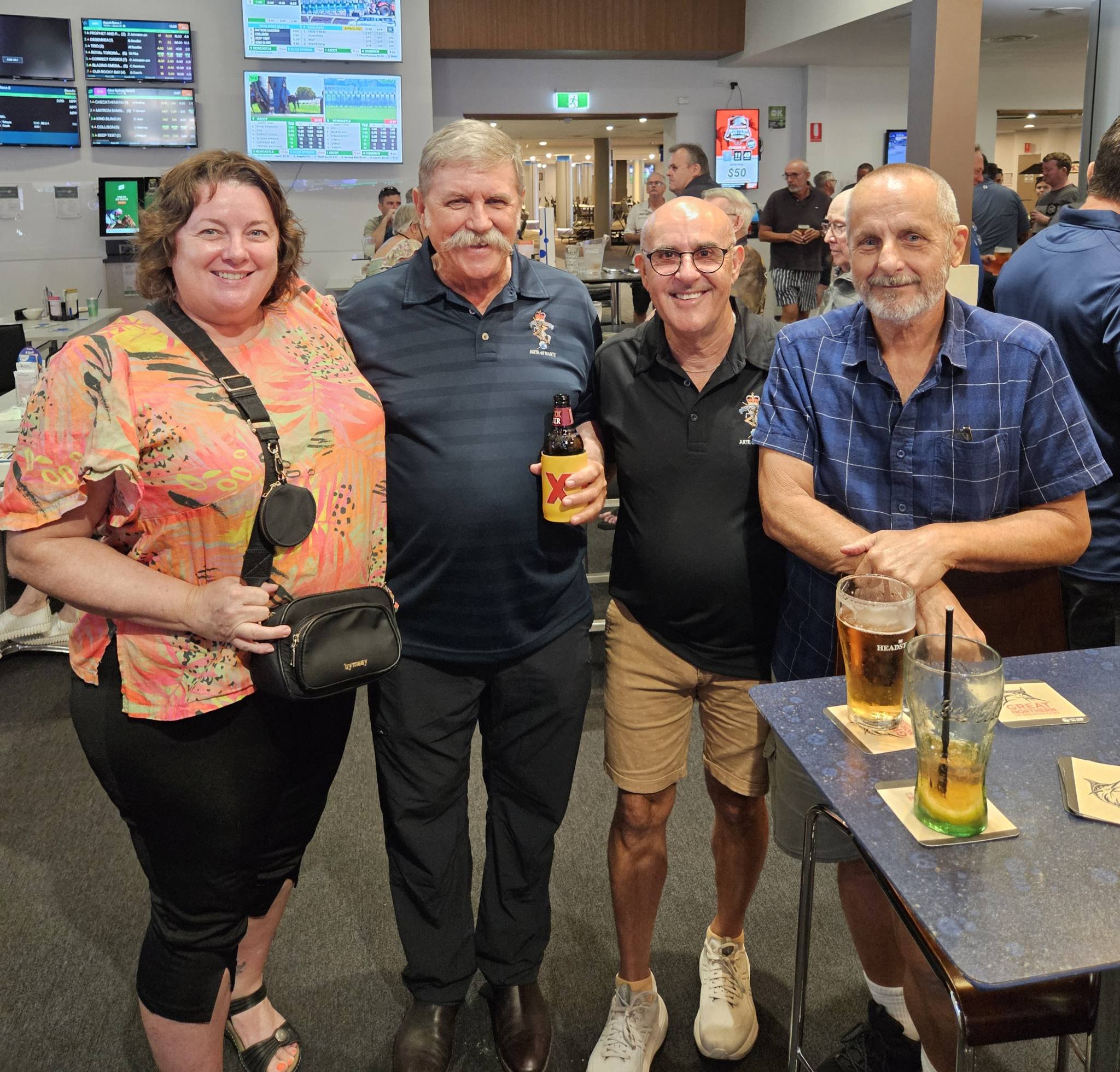The RAEME Association Queensland Incorporated is a not-for-profit, volunteer, community service organisation, supporting the RAEME National Network by providing leadership to, and a focal point for, all RAEME affiliated Associations in Queensland, by promoting and recognising the corps and its achievements via independent memorial, celebratory, social, fundraising, sporting and other activities.
The purposes of the Association are to—
- promote, provide or carry out activities, facilities or projects for the benefit or welfare of the community or any members of the RAQ as a community service organisation; and
- promote the corps identity and reputation in Queensland; and
- recognise and celebrate the achievements of the members of the corps in Queensland; and
- provide a focal point for corps activities in Queensland.
The role of the RAEME is to ensure maximum operational availability of equipment to enable the commander to win the land battle. RAEME is a technical corps tasked with the maintenance of the Army's modern hardware and equipment. More on the Corps can be found at this link.
This site has been developed as a communication tool for RAEME members in Queensland. All attempts have been made to ensure the accuracy of the information supplied. If any errors or broken links are found, or if you have any item or article for inclusion on these pages, please contact the webmaster.
RAQ Subscriptions
Annual subscriptions to the RAQ are due by 30 June each year. Subscriptions can be paid using either PayPal (fee free) or EFT by clicking the Icon below and logging in. Renew your subscription for $10 a year or upgrade to Life Subscription for $100.
New members please use the 'Online Registration' link under the Membership banner.
All proceeds are used to support and promote the goals of the Association.
Meetings and Functions
Are held on the first Wednesday of each month excluding January, the latest information is on the Events page
RAEME Birthday - Monday 1st December 2025
On Monday, 1 December 2025, RAEME proudly celebrated 83 years of dedicated service to the Australian Army and the nation. Born in the Second World War to meet the growing technical demands of modern warfare, RAEME has evolved into a cornerstone of Australia’s military capability, renowned for its technical mastery, innovation, and unwavering commitment to keeping the Army ready to fight “and win".
Across Australia, RAEME members past and present gathered to mark this milestone, sharing stories, camaraderie and reflections on more than eight decades of service. From its modest beginnings to today’s highly specialised, technologically advanced Corps, RAEME has continually adapted to support the Army’s increasingly complex fleet of equipment and systems. These celebrations also honour the service and sacrifice of the men and women of RAEME, whose skill, dedication and courage have sustained the Corps through war, "warlike" operations, peacekeeping and humanitarian missions since 1942. Their contributions, often carried out under demanding, dangerous and unforgiving conditions remain central to the Army’s strength.
The RAEME Associations, formed during the height of the Second World War, have stood alongside the Corps since 1944, strengthening its legacy and supporting its people. On Monday, 6 November 1944, "The Argus" newspaper reported on a well-attended gathering, where serving AEME members and recently discharged tradesmen came together to establish a permanent association. Their aim was simple but enduring, to preserve fellowship, provide support to those in need, champion the Corps’ work, and remain engaged in the future of Australia’s military capability. Eight decades on, the RAEME Associations continue to uphold those founding principles connecting veterans and serving members, promoting Corps heritage, and supporting the RAEME family wherever they are.
Eighty-three years on, RAEME continues to embody its motto, Arte et Marte “With Skill and Fighting”, remaining at the forefront of engineering excellence and military innovation. As the Corps looks to the future, it remains committed in its mission to deliver the technical expertise that ensures the Australian Army is equipped and ready for the challenges of tomorrow.
Happy Birthday RAEME
Arte et Marte
Craftsman Reserve 2025 Bourbon is here!
Bottles are now being dispatched and they’re moving fast. Of the original 500 bottles produced exclusively for the RAEME Association, we estimate only around 190 remain available for purchase — once they're gone, they're gone.

This year, our mates at Milton Distillery have lifted the bar again, experimenting with a refined mash to create a one-off bourbon crafted just for RAEME made from Australian Corn mash!. Expect a floral nose with hints of honey and vanilla, rolling into a warm, spiced finish a fitting tribute to the artisans of our Corps.
Raise a glass to exceptional craftsmanship and the spirit of those who always strive for perfection.
How to get yours
- Ordering is now open — limited allocation remaining
- Retail: $90 | RAQ Members: $80 (use the member-only discount code, make sure you login first or
This email address is being protected from spambots. You need JavaScript enabled to view it. !) - Free shipping on orders over $130 — remember to select the free-shipping option at checkout!
Purchase exclusively via the distillery — click the button below or copy the link:
https://miltondistillery.com/product/raeme-bourbon-2025-limited-edition/
(Link is not publicly listed)
Important ordering info:
-
Members — don’t forget to apply your discount code at checkout.
-
You’re welcome to purchase other Milton Distillery products, but the $10 discount applies only to our bourbon (per bottle — buy as many as you like!).
-
With a large volume of orders to fill, please allow up to a week or so before contacting the distillery directly:
This email address is being protected from spambots. You need JavaScript enabled to view it.
Cheers to our Craftsman Reserve Bourbon!

